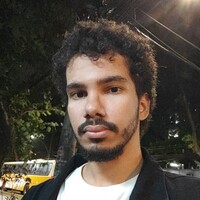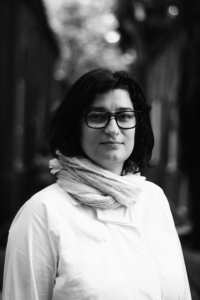
Entre a ferida aberta e a sutura: o corpo discente frente às opressões no processo formativo em Design na ESDI/UERJ
A pesquisa procura investigar, junto ao corpo discente da Escola Superior de Desenho Industrial da Universidade do Estado do Rio de Janeiro (ESDI/UERJ), como as opressões estão inseridas no processo formativo em Design.

Amanda Rosetti

Contracolonialidade

Arquitetura de Terreiros

Arquitetura e Feiras Livres

AnaCarolina_BritoCosta_Relatório.pdf

Apresentação final (1).pdf

Aghata Oliveira

RELATÓRIO_PROJETODEGRADUAÇÃO_AGHATAOLIVEIRA.pdf

WhatsApp Image 2023-11-01 at 22.39.41.jpeg

Design (linhas anteriores)

PROJEKT - Plataforma de portfólio e acompanhamento de projetos para designers
Este projeto visa registrar a análise de experiência do usuário de uma plataforma online para o desenvolvimento colaborativo dos projetos de alunos de Design da ESDI. Seu principal objetivo foi a criação de uma plataforma que permite e incentiva os usuários a divulgarem seus projetos desde a concepção, recebendo feedbacks de outros alunos e, assim, melhorando-os de forma colaborativa. Por focar mais no processo de desenvolvimento do que no produto final, recebeu o nome provisório de Processofólio. Posteriormente, esse termo foi substituído por PROJEKT, nome escolhido durante o desenvolvimento do branding da plataforma.


Alunos

ESDI

Portfólio

Processofólio

PROJEKT

ESDI

ESDI

PROJEKT - Plataforma de portfólio e acompanhamento de projetos para designers

Rafael apresentando o TCC. Bruno Sérgio e Ricardo Artur observando. Aghata e outros amigos registrando o momento.

Rafael e Maurício apresentando o TCC

Rafael Inocencio (direita), Bruno Sérgio (centro) e Maurício Oliveira (esquerda) após a defesa de TCC

Designing in the anthropocene: dilemmas, challenges and potential
This project seeks to situate Design in the face of the dilemmas, challenges and potential posed by the emergence of a new geological era in the history of planet Earth, marked by intense and vertiginous environmental changes. This era has been designated on the basis of an increasingly evident mark associated with a certain type of human action: the Anthropocene. In order to investigate the implications of the Anthropocene for the making of design, the project is organised on four fronts: (1) Bibliographical review and survey of the state of the art of studies on the Anthropocene, both within and outside the field of design; (2) Situated Anthropocene: ethnographic, historical, geontological, narrative and speculative research in the historic city centre of Rio de Janeiro; (3) Learning by doing with Afro-indigenous perspectives; and (4) Design as a practice of permacultural correspondence. Aiming to gather scientific support for tackling contemporary social issues, such as maintaining living conditions in the Anthropocene, the project links social and anthropological approaches to the field of Visual Programming Design. Combining various methodological approaches, the project coordinates a series of teaching, research and extension actions to address the following objectives: To investigate what characterises the Anthropocene; To identify the implications of the new geological era for the making of Design; To gather reference material on Design and the Anthropocene; To point towards epistemological and methodological revisions in the field of Design in response to the challenges posed by the Anthropocene; To situate the Anthropocene, investigating the specificity of its incidence in the central region of the city of Rio de Janeiro; To circulate sustainable social knowledge and technologies, such as those produced by indigenous peoples, quilombolas, terreiro peoples, and movements linked to agroecology and permaculture; And to apply Visual Programming skills to the widespread dissemination of the knowledge gathered.
